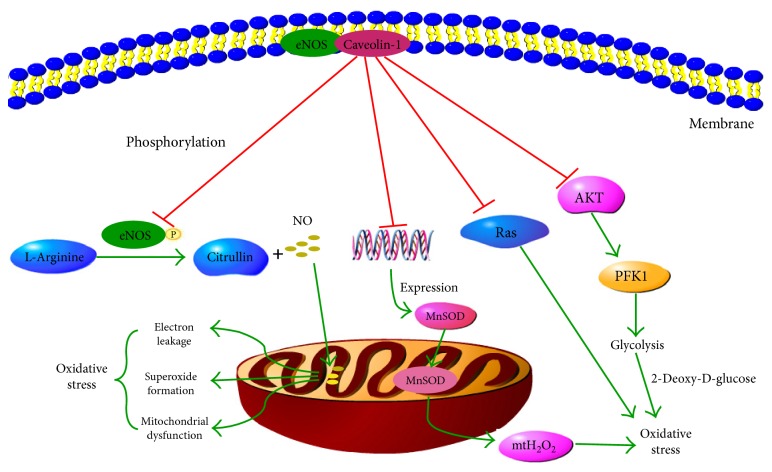Figure 5.
Regulation mechanisms of Cav-1 on oxidative stress. eNOS is maintained in an inactive state in caveolae by its interaction with Cav-1-scaffolding domain. Upon stimulation, eNOS is released and phosphorylated and could catalyze the NO synthesis reaction. NO overproduction could result in the inhibition of mitochondrion by attenuating the terminal phase of the electron transport chain complex, leading to electron leakage, superoxide formation, and mitochondrial dysfunction. Furthermore, Cav-1 could inhibit the transcription of MnSOD and thus reduce the release of excess mitochondria-derived H2O2 (mtH2O2). Moreover, glycolysis process could lead to the overproduction of reactive species, while 2-deoxy-D-glucose, a glycolysis inhibitor, could prevent reactive species burst. Phosphofructokinase 1 (PFK1) is the rate-limiting enzyme of the glycolysis process. Cav-1 could inactivate the PI3K/AKT/PFK1 pathway and therefore block the glycolysis process. Finally, Cav-1 could prevent the overproduction of reactive species by inactivating the Ras pathway.

